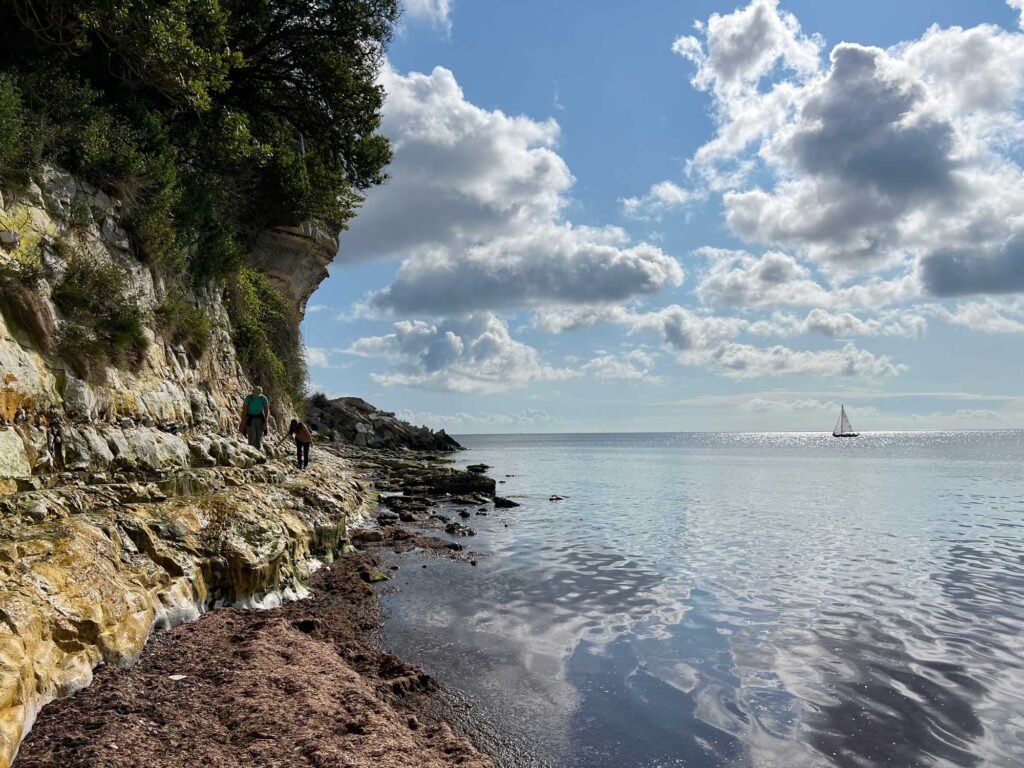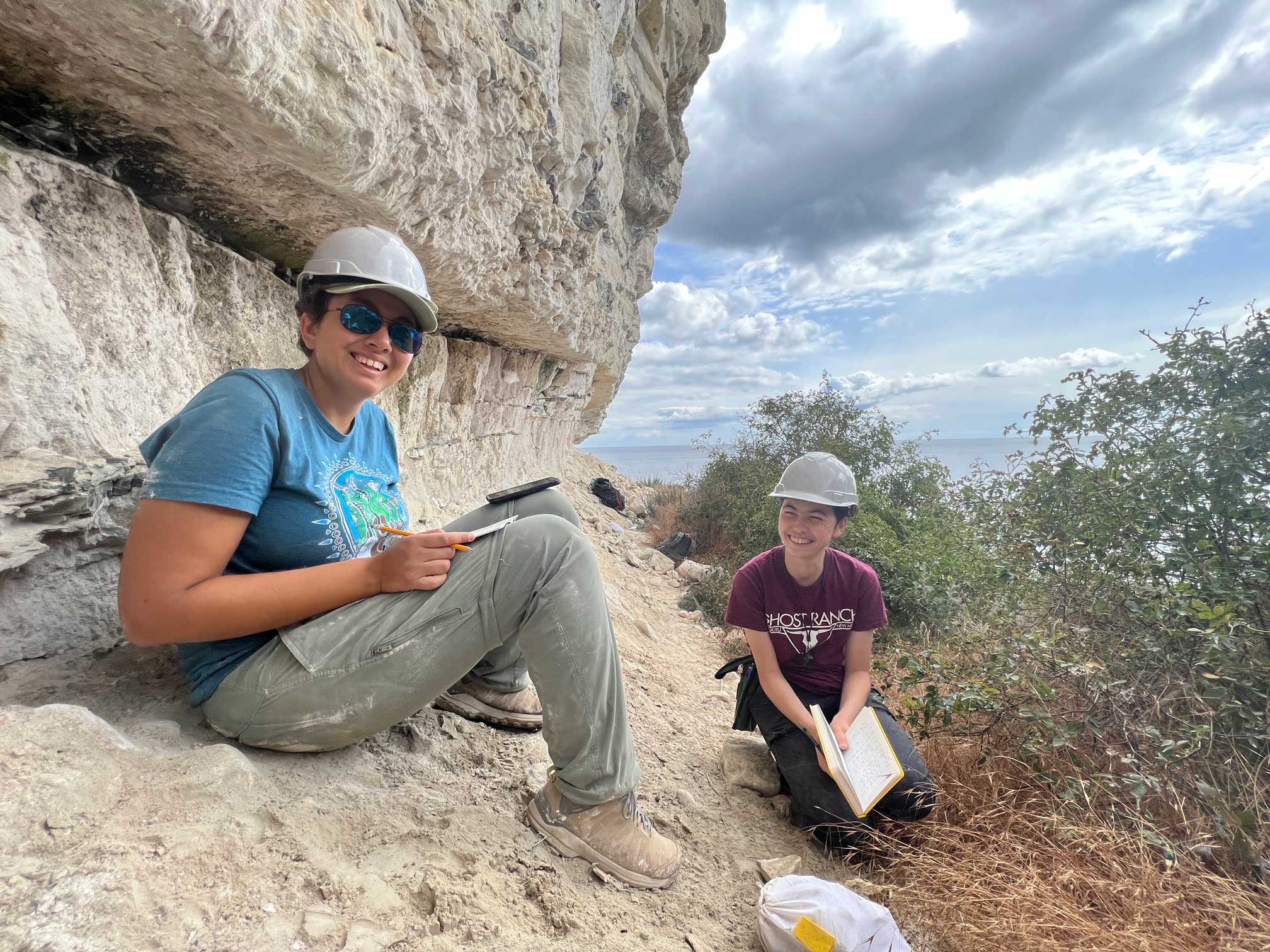Collecting Bryozoa from Stevns Klint, Denmark

70 million years ago, Denmark was a warm sea. Rich and varied communities of invertebrates inhabited the seafloor. These ecosystems left behind vast chalk deposits, which have been mined for building material, writing utensils, and fertilizer for over a thousand years. The chalk is also special to paleontologists, because it is rich in fossils and spans the Cretaceous-Paleogene (K-Pg) boundary, one of the largest mass extinctions in Earth’s history. We went to Stevns Klint, Denmark to look at how ecosystem structure changed before and after the K-Pg.

Stevns Klint is a 14.5 km stretch of sea cliffs that was designated a UNESCO World Heritage Site for its excellent display of before and after the K-Pg extinction. The boundary between the Mesozoic and Cenozoic appears as a thin bed of clay. Above and below, black beds of chert arc across the otherwise monotonous white cliffs. These cherts indicate where there were mounds on the original seafloor topography, shaping the ecosystem. Just like the distribution of tree species changes with altitude and slope aspect across a mountain range, these mounds may have shaped the distribution of invertebrate species across the seafloor. Past research has either looked at how invertebrate diversity changes across the K-Pg boundary or across a mound, but we plan to look at the intersection. How did the distribution of species across mounds change after the mass extinction? Are there ecological traits like growth form or reproductive strategy that affect their distribution or extinction probability?

We focus on bryozoans, Stevns Klint’s most abundant fossil. Bryozoans are a phylum of colonial invertebrates that can grow like underwater trees, like lichens, or like walking thimbles. We start by exploring the length of the cliffs and trying to recognize the age of the chalk in different sections. Rock falls, old quarries, vegetation, and millions of years of other wear and tear try to mislead us. The bryozoans are abundant in places and sparse in others, but the pattern won’t make sense without quantitative analysis. We take bulk samples of the troughs, flanks, and crests of multiple bryozoan mounds from the Cretaceous and Paleogene. In the lab, we will then sieve the bryozoan fragments from the chalk matrix and begin imaging and describing the fossils.
This project would not be possible without Dr. Jesper Milàn or Professor Eckart Håkansson, who provided permits and expert local advice. The bryozoan specimens we prepare will become a part of Denmark’s Østsjællands Museum collections after the study.